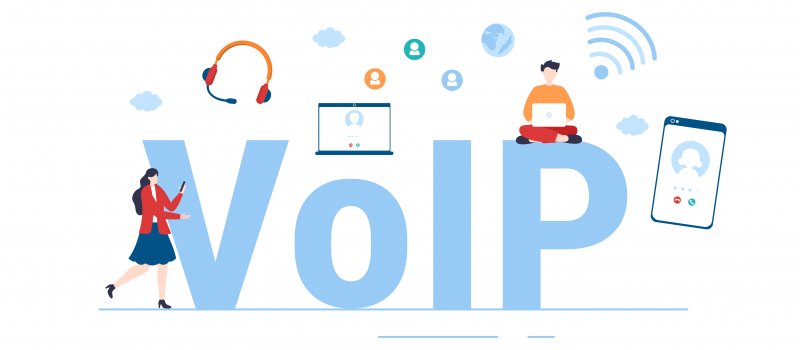With cloud technology, the bar to getting a business phone system is lower than ever. You can obtain a feature-rich professional line for just $27.99 as long as you have an internet connection.
(That’s even more of a steal when you consider the average monthly cell phone bill is $144!)
However, there are other factors to consider in determining your final bill for your business phone service, which is why it’s best to get a personalized quote. Find out what impacts the cost of your business phone plan and how to pick a service that gets you the best return on investment.
Key Takeaways:
- Cloud-based business phone solutions are much more cost-effective than on-premise private branch exchanges (PBX).
- Cloud systems don’t require extensive installation, hardware, or maintenance.
- For cloud communications, remember to factor in overhead for any additional internet bandwidth that is necessary.
- Calculate the number of users, lines, and features you’ll require to figure your expenses, but also consider the amount of profit each line helps you generate to calculate your true cost.
The Type of Business Phone System
The single greatest factor in determining your system’s cost will be whether you select an on-premise analog or cloud-based system. This choice influences all the other costs.
On-premise systems require you to connect physical lines to a building and install hardware for use by employees. You also have to design and maintain such a system, requiring considerable time and money.
In contrast, with cloud-based systems,your provider hosts your service in secure data centers. Then, you and your team access your business lines from wherever you are through an internet connection on your own online devices or dedicated IP phones.
As with other services, subscription-based virtual solutions are less expensive and can more rapidly deliver many more features compared with installing hardware and licensing software annually. On the surface, subscription fees might appear a little higher than the cost of an annual license for an on-premises system. However, a cloud-based subscription model eliminates other substantial expenses, making for a low-cost, high-value solution.

Number of Users
The number of lines will affect your costs no matter the system you use. Still, you’ll quickly discover that cloud systems cost you much less per line than setting up physical phone lines.
With old-fashioned PBX systems, you’ll need a technician to install the wiring and run it to the appropriate locations for every new line. Scaling up is expensive and takes lots of time, while scaling down leaves you with unused space and equipment.
Cloud systems allow you to add and remove lines and users as needed, right within your administrative app. Talk to your provider about whether a per-line or per-user plan is the better choice for your company, since you may have situations where single users require multiple lines.
When on the cloud, remember that the number of users influences the amount of internet bandwidth you’ll need. Calculate your requirements for each employee at your office or what hybrid and remote workers need to use if you reimburse their internet expenses.
Advanced Features
Extra features like call forwarding, secure video conferencing, contact center capabilities, call recording, and transcriptions become expensive add-ons with on-premise systems. On the other hand, many of these come standard in some form on a cloud system. If you need to purchase more robust features, you can add them to your system from your dashboard instantly.
Adding advanced features through one virtual business phone system also saves you from hiring multiple vendors for a piecemeal solution that doesn’t fully integrate. This can mean huge savings in not just money but also time and productivity.
Determine which features your team needs so you can accurately figure out your expenses for these items. At the same time, look at how those features generate revenue. With advanced analytics and reporting, you can get clear data that shows you how these elements benefit your team and bottom line.
Phones and Hardware
With on-premise systems, you must purchase phones for your team. These systems often require specific devices that are compatible with the system.
VoIP systems that run on the cloud allow your team to start connecting with customers or each other without buying a single piece of new equipment. Each user simply downloads a secure app to a computer, tablet, or smartphone to begin.
However, if your team still needs dedicated business phones, you can acquire plug-and-play devices that require no technical installation. Cloud systems are compatible with a wide variety of business phones, including existing analog PBX phones, making it simple and easy to get started.

Billing
A common way to save costs with any subscription-based service is by paying annually instead of monthly. Of course, you don’t want to get stuck paying for services you won’t use
You can make sure you’re maximizing your budget by carefully monitoring your phone system and data usage to determine which plans and features you require. That information allows you to plan your upcoming year and save money with yearly billing.
Once again, cloud systems have an advantage because you can easily see how your team is using your plan with a service adoption dashboard. With Intermedia Unite, this feature helps you view your usage and make smart decisions about payment plans.

Start Delivering High ROI With a Low-Cost VoIP Phone System
Switching to cloud communications doesn’t just help you start saving money on phone bills. It also equips you with features that increase employee engagement and drive revenue through enhanced customer service.
Get a quote on your out-the-door costs for deploying a cloud-based service by talking with an Intermedia representative. Discover today how easy and worry-free a business phone system can be.
April 18, 2025
Explore other posts on these topics: Unified Communications





